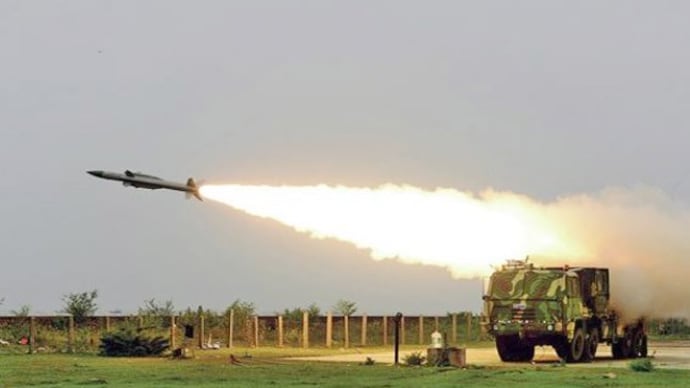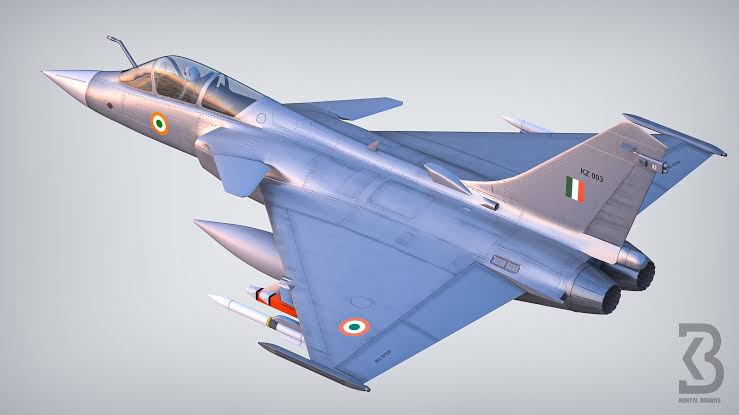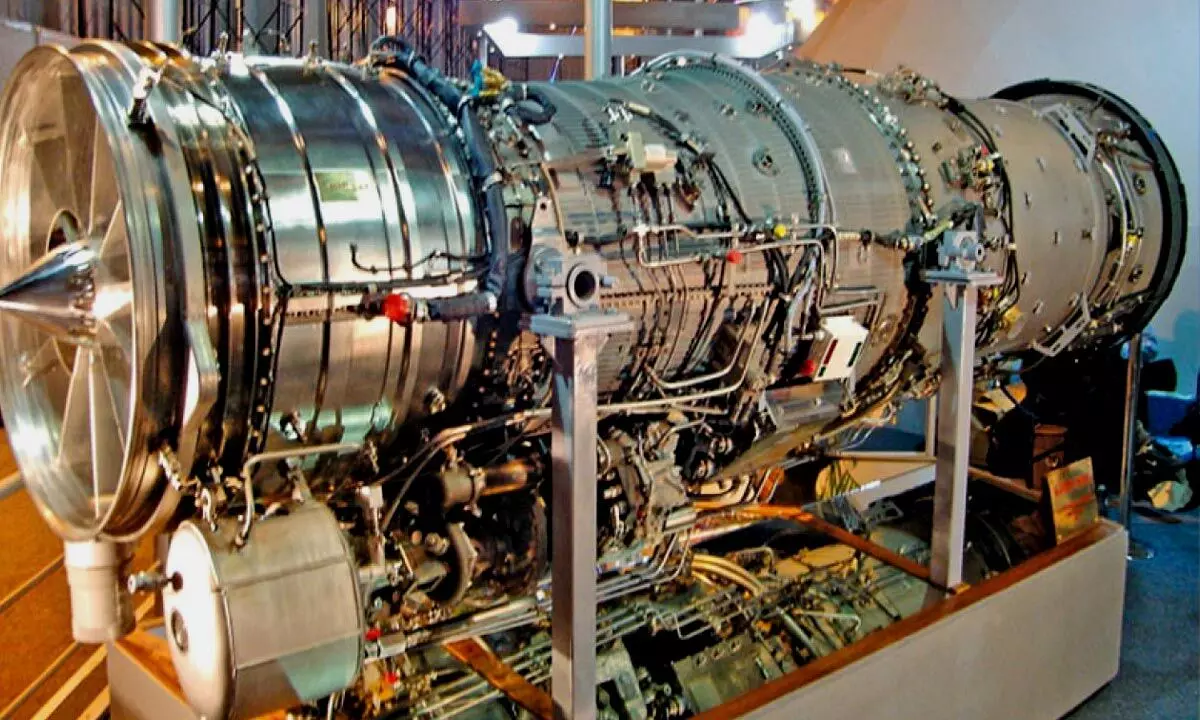SOURCE: AFI

Chandrapur, a town near Guwahati in Assam, is set to become a pivotal hub for India’s space ambitions as the Indian Space Research Organisation (ISRO) establishes the country’s first space debris monitoring radar under Project Netra (Network for Space Object Tracking and Analysis). This groundbreaking initiative, announced on April 3, 2025, marks a significant step toward enhancing India’s space situational awareness (SSA) and safeguarding its growing fleet of satellites from the increasing threat of space debris.
Project Netra involves the creation of a comprehensive network of observational facilities, including optical telescopes, radars, and a centralized command center. The radar system in Chandrapur, to be set up on a 200-bigha plot of land at the site of a defunct thermal power plant, will be capable of detecting objects as small as 10 cm in radius at distances up to 2,000 km. This capability will allow ISRO to track space debris in low-earth orbits (LEO), where most of India’s remote-sensing satellites operate, as well as monitor potential threats to assets in higher orbits. ISRO aims to make at least one radar operational within this year, with the full Chandrapur system expected to be commissioned within four years, by 2029.
Continue readingSOURCE: AFI


As India charts its course toward developing a sixth-generation fighter jet under the Advanced Medium Combat Aircraft (AMCA) program, the strategic imperatives of its northern frontier—particularly the People’s Liberation Army Air Force (PLAAF) airbases in the Tibetan Plateau—demand a bold rethink of the platform’s design. To effectively counter China’s growing military presence and execute deep-strike missions against heavily defended targets, India’s next-gen fighter must evolve into a fighter-bomber with a Maximum Take-Off Weight (MTOW) of around 50 tons. This requirement stems from the need for enhanced payload, range, and survivability, critical for penetrating the PLAAF’s air defense network and neutralizing high-value assets deep inside contested territory.
The Tibetan Plateau, often called the “Roof of the World,” hosts several key PLAAF airbases, such as Hotan, Ngari Gunsa, and Lhasa Gonggar, located between 1,500 and 3,000 kilometers from India’s northern borders. These bases, situated at altitudes exceeding 4,000 meters, serve as launchpads for fighter jets like the J-20 and J-16, as well as bombers like the H-6K, capable of striking Indian targets with standoff weapons. The PLAAF’s deployment in Tibet has grown steadily, bolstered by advanced radar systems, surface-to-air missiles (SAMs) like the HQ-9, and an integrated air defense network extending into Xinjiang and beyond. Neutralizing these airbases is vital to disrupt China’s ability to project air power over the Line of Actual Control (LAC) during a conflict.
Continue readingSOURCE: AFI


on X),
India has announced a missile test in the Bay of Bengal, with a designated no-fly zone in effect from April 12 to April 14, 2025, as part of its ongoing efforts to bolster its strategic defense capabilities. The advisory, issued by the Indian Navy’s Eastern Naval Command in Visakhapatnam, covers a 1,245 km-long corridor stretching from Abdul Kalam Island off the Odisha coast to the Andaman and Nicobar Islands, under the purview of the Indian Tri-Service Theatre Command. The test underscores India’s commitment to advancing its missile technology amid growing regional security concerns.
According to the notice, the no-fly zone will be active daily from 0400 UTC to 0430 UTC (9:30 AM to 10:00 AM IST) on April 12, 13, and 14, 2025. The restricted area spans a significant portion of the Bay of Bengal, ensuring safety for maritime and air traffic during the test window. Abdul Kalam Island, formerly known as Wheeler Island, is a key launch site for India’s missile tests, hosting facilities for the Defence Research and Development Organisation (DRDO). The island has been the launchpad for major systems like the Agni series of ballistic missiles and the BrahMos supersonic cruise missile.
Continue readingSOURCE: RAUNAK KUNDE / NEWS BEAT / IDRW.ORG


India has expressed keen interest in joining the Global Combat Air Programme (GCAP), a trilateral initiative by Japan, the United Kingdom, and Italy to develop a next-generation fighter jet, according to a report by Sankei.com, operated by Japan-based Sankei Digital Inc. The ambitious project, agreed upon in December 2022, aims to deploy a cutting-edge stealth fighter by 2035. Multiple Japanese and Indian diplomatic sources have confirmed that India has formally approached the Japanese government to explore participation, signaling a potential expansion of the program. However, Japan remains wary, citing concerns over technology leakage due to India’s longstanding defense ties with Russia.
The GCAP represents a strategic collaboration to replace aging fleets—Japan’s Mitsubishi F-2, Britain’s Tempest, and Italy’s future requirements—with a sixth-generation fighter featuring advanced stealth, AI integration, and networked warfare capabilities. The program’s high development costs, estimated in the tens of billions of dollars, have prompted the trio to consider broadening partnerships. India’s inclusion could ease the financial burden by expanding the market and leveraging its growing defense industry. Yet, the Japanese government is grappling with a dilemma: while India’s participation could enhance deterrence against a shared regional threat—China—it also raises security risks.
Continue readingSOURCE: RAUNAK KUNDE / NEWS BEAT / IDRW.ORG


The Indian Army’s modernization efforts are facing a dual challenge as it awaits the delivery of its first batch of six Apache AH-64E attack helicopters from Boeing, while the Indian Multi-Role Helicopter (IMRH) program, a 13-ton medium-class helicopter under development by Hindustan Aeronautics Limited (HAL), remains stalled pending clearance from the Cabinet Committee on Security (CCS).
Adding to the complexity, sources cited by idrw.org reveal that HAL has no plans to develop an IMRH-based heavy attack helicopter in the Apache class, citing limited demand from the Indian Air Force (IAF) and Army. Instead, both services are focusing on the indigenous Light Combat Helicopter (LCH) Prachand, with orders for 156 units recently approved, highlighting a strategic preference for lighter, high-altitude-capable attack helicopters over heavier variants.
Continue readingSOURCE: RAUNAK KUNDE / NEWS BEAT / IDRW.ORG


India is poised to strengthen its defense export portfolio with an anticipated deal to supply the Akash Surface-to-Air Missile (SAM) system to the Philippines this 2025. Valued at over $200 million, this agreement, if finalized, will mark India’s second major defense export contract with Manila, following the successful $375 million sale of the BrahMos supersonic cruise missile in 2022. While it remains unclear whether the Akash SAM will be destined for the Philippine Army or the Philippine Marine Corps, the deal underscores the growing strategic partnership between the two nations amid rising tensions in the Indo-Pacific region.
Developed by India’s Defence Research and Development Organisation (DRDO) and manufactured by Bharat Dynamics Limited (BDL), the Akash is a medium-range SAM system designed to neutralize a variety of aerial threats, including fighter jets, cruise missiles, and drones. With a range of up to 25 kilometers and an altitude capability of 18 kilometers, the Akash can engage targets at supersonic speeds of Mach 2.5. Each battery comprises a Rajendra 3D passive electronically scanned array radar and four launchers, each carrying three missiles, enabling it to track up to 64 targets and engage 12 simultaneously.
Continue readingSOURCE: AFI


In a significant stride towards bolstering India’s self-reliance in defense manufacturing, Gurugram-based Kohli Enterprises has been awarded the Limited Authorization Transfer of Technology (LA ToT) for the production of brake parachutes for the Indian Air Force’s Su-30 MKI aircraft. The technology transfer, facilitated by the Defence Research and Development Organisation (DRDO) under the Ministry of Defence, Government of India, marks a pivotal moment in integrating private industry into the nation’s defense production ecosystem.
The formal handover took place during an event organized by DRDO on the sidelines of Aero India 2025, held in Bengaluru from February 10-14, 2025. Kanav Kohli, Managing Director of Kohli Enterprises, received the LA ToT document from Raksha Rajya Mantri Shri Sanjay Seth, Minister of State for Defence, in the presence of senior officials from the Ministry of Defence, DRDO, and the Indian Air Force (IAF). This transfer underscores India’s ongoing “Aatmanirbhar Bharat” initiative, aimed at reducing dependence on foreign suppliers and fostering indigenous innovation.
Continue readingSOURCE: AFI


In a significant step forward for India’s aerospace and propulsion industry, DG Propulsion has announced the successful completion of its first test turbine wheels, marking a pivotal moment in the company’s journey to refine its manufacturing processes. The initial batch, described as “phenomenal” by the company, has passed visual inspections with flying colors, setting a promising tone for the next stages of production.
DG Propulsion, a rising player in the global propulsion technology sector, conducted this trial run to fine-tune its methods and ensure the highest standards of quality and precision. “This was a trial run to refine our process and methods, and so far, the results speak for themselves,” the company stated in an official release. The turbine wheels, a critical component in jet engines and other high-performance propulsion systems, are a testament to DG Propulsion’s commitment to innovation and excellence.
Continue readingSOURCE: AFI


In a significant step towards strengthening India’s defense and surveillance capabilities, Paras Defence and Space Technologies announced on Thursday, April 3, 2025, that it has signed a Memorandum of Understanding (MoU) with MicroCon Vision Ltd, an Israel-based subsidiary of the Rafael Group. The agreement focuses on the supply of advanced cameras for drones, positioning Paras Defence as a key player in India’s growing unmanned aerial systems market.
The collaboration aims to enhance the indigenous content in drone cameras and Intelligence, Surveillance, and Reconnaissance (ISR) payloads, aligning with India’s push for self-reliance in defense manufacturing. By integrating locally developed components, Paras Defence expects to significantly reduce costs, making advanced drone technology more accessible for both military and commercial applications. This move underscores the company’s commitment to the ‘Make in India’ initiative while leveraging global expertise to meet domestic needs.
Continue readingSOURCE: AFI


Kuntal Biswas, one of India’s most prominent 3D military system and defense animation experts, has once again captured the imagination of aviation enthusiasts and defense analysts with his latest creation: a twin-engine variant of the Tejas MkII. This conceptual design, powered by twin Kaveri engines each generating 75kN of thrust, showcases the potential of India’s indigenous aerospace capabilities and positions the Tejas MkII in the same league as global heavyweights like the Dassault Rafale. With a Maximum Take-Off Weight (MTOW) of approximately 24 tons, this innovative design aligns closely with the Rafale’s capabilities, powered by the Snecma M-88 engine, which also delivers 75kN of thrust.
Biswas, renowned for his detailed and visionary 3D renderings of military hardware, has evolved the Tejas MkII—originally conceived as a single-engine, medium-weight fighter—into a twin-engine multirole combat aircraft. His design incorporates canard-delta wings, an indigenous Active Electronically Scanned Array (AESA) radar, and a fully homegrown weapons suite, blending cutting-edge technology with India’s push for self-reliance in defense manufacturing. The twin-Kaveri engine configuration not only boosts the aircraft’s thrust but also enhances its versatility, making it a formidable contender in air superiority, ground attack, and reconnaissance missions.
Continue readingSOURCE: IDRW.ORG


The Indian Air Force (IAF) has received a significant boost in its quest to enhance airborne surveillance capabilities, with recent clearance to procure six Embraer EMB-145 aircraft for the Netra Mk1A program. This approval, anticipated to be formalized soon by the Defence Acquisition Council (DAC), marks a critical step in modernizing the IAF’s Airborne Early Warning and Control (AEW&C) fleet. With production of the EMB-145 having ceased years ago, Brazilian aerospace giant Embraer, the aircraft’s original manufacturer, will now scout the secondary market for operational units, partnering with India’s Adani Defence and Aerospace to bring the Netra Mk1A vision to fruition.
The Netra Mk1A is an advanced iteration of the existing Netra AEW&C system, which is built on the EMB-145 platform and equipped with indigenous radar technology developed by the Centre for Airborne Systems (CABS) under the Defence Research and Development Organisation (DRDO). The IAF currently operates three Netra systems, providing 240-degree radar coverage with a range of approximately 450 kilometers. The Mk1A variant promises enhanced operational capabilities, including upgraded mission suites and minor equipment modifications, to meet evolving threats along India’s borders with China and Pakistan. The addition of six more aircraft will nearly triple the IAF’s AEW&C capacity, addressing a shortage felt acutely during the 2019 Balakot aerial engagement.
Continue readingSOURCE: IDRW.ORG


The Indian Air Force (IAF) has initiated a proposal to develop a Part Task Trainer (PTT) for its Mirage 2000 aircraft, a critical asset in its fighter fleet, to enhance pilot training and operational readiness. The IAF’s requirement focuses on creating a high-fidelity training system that replicates the Mirage 2000’s cockpit environment, allowing pilots to practice basic flying, simulate various modes of operation, and familiarize themselves with the aircraft’s controls and displays in a controlled, cost-effective setting. This move underscores the IAF’s commitment to leveraging advanced simulation technology to maintain the proficiency of its pilots, particularly as the Mirage 2000 continues to play a pivotal role in India’s air defense strategy.
The IAF’s proposal for the Part Task Trainer emphasizes the need for an accurate replica of the Mirage 2000’s cockpit, with a particular focus on the stick and throttle, which are critical for simulating the aircraft’s handling characteristics. The trainer will also feature Multifunctional Displays (MFDs), Head-Up Displays (HUDs), and other cockpit displays, which will be replicated using modern LCD, TFT, or OLED display panels with touch-screen functionality. This approach allows for a cost-effective yet realistic simulation of the Mirage 2000’s avionics, enabling pilots to interact with the displays as they would in the actual aircraft.
Continue readingSOURCE: AFI


In a significant milestone for India’s aerospace and defense sector, Godrej Aerospace has confirmed the delivery of the first two modules of the Kaveri derivative engine to the Gas Turbine Research Establishment (GTRE). The company, a key player in precision manufacturing, also announced that six additional modules are slated for delivery later this year, fulfilling a critical order placed by the Defence Research and Development Organisation (DRDO).
The order, secured by Godrej Aerospace in September 2022, involves the production of eight modules for a specialized Kaveri derivative engine. Unlike the original Kaveri engine, which was developed for fighter aircraft, this variant is a 48 kN dry engine without an afterburner. Sources indicate that this engine is intended for use in autonomous air vehicles, marking a step forward in India’s indigenous unmanned aerial technology.
Continue readingSOURCE: AFI

In a candid conversation with Snehesh Alex Phillip of The Print, Lt Gen PR Shankar (Retd), former Director General of Artillery, dropped a bombshell about the Indian Army’s experience with the Russian-made Smerch multiple rocket launcher system. According to Shankar, the Smerch that was ordered in 2005 and inducted into service by 2008, yet the Indian Army (IA) was unable to fire it until 2012 due to persistent technical issues. The statement, delivered with a mix of incredulity and frustration, has left defense enthusiasts and analysts questioning the procurement process and the prolonged delay in resolving the problem. “Did I hear it right?” quipped a Indian defence analysts, echoing the disbelief many might feel about this operational hiccup.
The Smerch, a 300mm rocket system with a range of up to 90 kilometers, was acquired from Russia to bolster India’s long-range artillery firepower. Touted as one of the most powerful multiple launch rocket systems (MLRS) in the world, it was intended to give the IA a decisive edge in precision strikes and area saturation against enemy targets. The initial order, part of a broader modernization drive, came at a time when India sought to counter growing threats along its borders, particularly from Pakistan and China. The deal, reportedly worth over $500 million, included launchers, rockets, and support systems, with deliveries beginning in 2007-2008.
Continue readingSOURCE: AFI


On April 2, 2025, an Indian Air Force (IAF) Jaguar fighter jet crashed near Suvarda village, just 12 kilometers from Jamnagar in Gujarat, during a routine training sortie. The twin-seater aircraft, which departed from Jamnagar Air Force Station, suffered a critical technical malfunction around 9:30 PM, leading to its disintegration in an open field. One pilot, Flight Lieutenant Siddharth Yadav, lost his life in the incident, reportedly staying with the aircraft to steer it away from populated areas, while the second pilot ejected safely and is under treatment at GG Hospital. The IAF has launched a Court of Inquiry to investigate, with early indications pointing to a mechanical failure.
Yet, as Indian authorities focus on the technical realities of the crash, a wave of bizarre and baseless narratives has emerged from Pakistan. ISI-backed X handles and several verified Pakistani accounts have flooded social media with claims that the Jaguar was not lost to a malfunction but was instead shot down by the Pakistan Air Force (PAF). These conspiracy theories, ranging from plausible-sounding to outright absurd, highlight a mix of propaganda and technical ignorance.
Continue reading